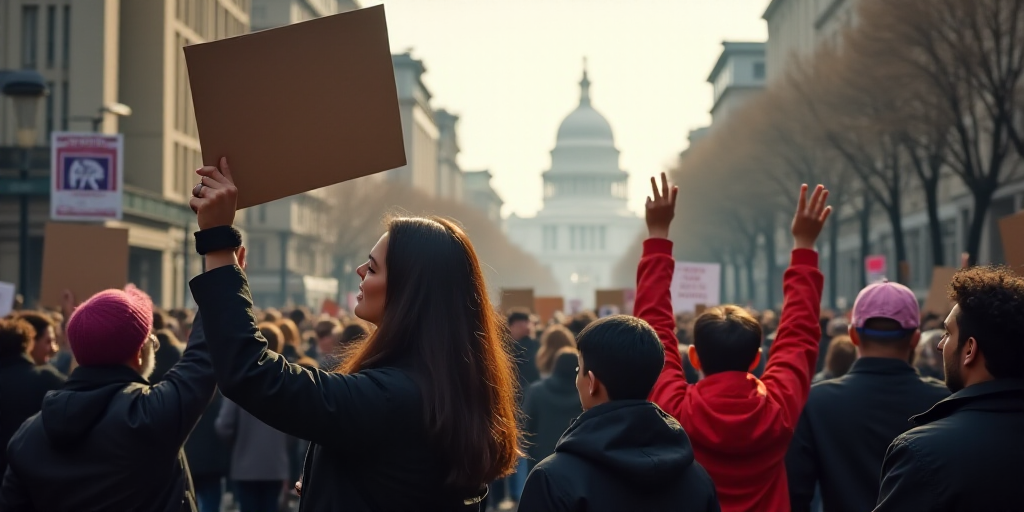March Details and Authorities’ Request for Peaceful Protest
The second march against gentrification in Mexico City is confirmed for Sunday, July 20th, at 3:00 PM, starting from the Fuentes Brotantes station on Metrobús Line 1 in the Tlalpan alcaldía. The expected route will follow Avenida Insurgentes Sur, passing through the following colonias and barrios:
- Unidad Habitacional Fuentes Brotantes.
- Colonia Fuentes Brotantes.
- Colonia Santa Úrsula Xitla.
- Barrio La Fama.
- Barrio Camisetas.
- Barrio Arenal.
Claudia Sheinbaum’s Call for Peaceful Protest
The mayor, Claudia Sheinbaum, emphasized the importance of maintaining a peaceful protest while opposing gentrification. She stated, “There is a right to demonstration, free expression in Mexico, even if some claim otherwise. It is false, and protesters should demonstrate peacefully.”
Addressing Gentrification: Mayor’s Proposed Measures
The first march was a response to the gentrification of Mexico City’s capital, prompting alcaldesa Clara Brugada to present a package of measures to combat rising housing prices, protect indigenous communities, and curb real estate speculation in neighborhoods like Condesa, Roma, and Doctores.
BANDO 1 Program
- Rental Stabilization. Rent increases cannot exceed the annual inflation rate reported by INEGI, with legal mechanisms to enforce this restriction.
- Reasonable Rental Index and Housing Tension Zones. These will be created to define and regulate areas with high housing pressure, enabling more precise public policies.
- Regulation of Short-Term Rental and Platforms like Airbnb. Strengthen control over short-term rentals, primarily on digital tourism platforms.
- Tenant Rights Defense Office. Provide advice and mediation in cases of abuse or unjust evictions, with legal support for renters.
- Just, Reasonable, and Affordable Rent Law. A legislative initiative to balance the rights of landlords and tenants, regulate prices, and ensure accessibility.
- Sustainable Public Housing in Central Zones. Prioritize the construction of social housing in areas with high housing pressure, simplifying procedures and promoting urban harmony.
- Expansion of Public Rent for Prioritary Sectors. Increase the supply of affordable rental housing for young people, single mothers, seniors, and other vulnerable groups.
- Housing Improvement Program. A broad scheme to expand family spaces and develop affordable condominiums in popular neighborhoods.
- Collaboration with the Private Sector. Institutional collaboration with developers to promote affordable housing and limit speculative practices.
- Participatory Master Planning Program. A concerted urban design with communities to define equitable housing development models.
- Community Arraigo and Heritage Preservation Program. Protect historical, cultural, and public space heritage in traditional neighborhoods to strengthen collective identity and memory.
- Support for Local Commerce. Seed capital and soft loans for micro, small, and medium-sized businesses, trades, and traditional enterprises.
- Democratic Neighborhood Participation. Mechanisms for citizen participation enabling residents to design and influence their urban environment.
- Creation of the Land and Housing Observatory. This entity will collect, analyze, and disseminate data on rental contracts, prices by zone, occupancy (including Airbnb), and evictions with legal backing.
“No Violence”
The first march, initially expected to have limited attendance, drew participants from colonias like Condesa and Roma concerned about gentrification. However, some individuals caused minor incidents by damaging properties and businesses along the march route. In response, authorities emphasized their opposition to gentrification while advocating for peaceful protest:
“We do not endorse violence to address this issue. We reject violence as a method for resolving conflicts. This city is about rights and freedoms. We respect demonstrations and social expressions in response to any situation, but not aggression,” stated the government in a press release.
The local government urged young people to engage in dialogue, propose solutions, and act against gentrification while rejecting hate speech and xenophobic expressions towards migrants, regardless of their origin. The city has historically been a sanctuary, transit point, and welcoming place for those fleeing difficult situations in their home countries, as well as a destination for those choosing to settle there.
Key Questions and Answers
- What is gentrification? Gentrification refers to the transformation of lower-income neighborhoods into more affluent areas, often resulting in the displacement of original residents due to rising housing costs.
- Who are the main figures involved? Claudia Sheinbaum, the mayor of Mexico City, and Clara Brugada, the alcaldesa of the affected areas, are key figures advocating for affordable housing and peaceful protest.
- What measures have been proposed to combat gentrification? The BANDO 1 program includes rent stabilization, creation of reasonable rental indexes and housing tension zones, regulation of short-term rentals, tenant rights defense, just rent laws, sustainable public housing, expanded public rent for prioritary sectors, housing improvement programs, private sector collaboration, participatory master planning, community arraigo and heritage preservation programs, support for local commerce, democratic neighborhood participation, and the creation of a land and housing observatory.






